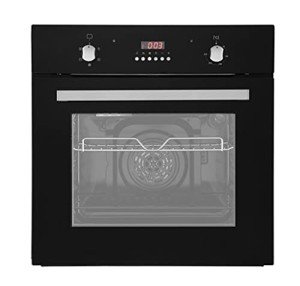The Rise of Built-In Ovens: A Seamless Approach to Modern Cooking
In contemporary kitchens, where style looks mix perfectly with performance, one appliance stands out as a real game changer: the built-in oven. As house owners and chefs alike continue to look for innovative options that boost their cooking experience, built-in ovens have actually become significantly popular. This post checks out the advantages, factors to consider, and trends surrounding built-in ovens, highlighting why they are an essential feature in modern cooking spaces.
What is a Built-In Oven?
A built-in oven is a cooking area device designed to be integrated into the kitchen cabinetry of a kitchen instead of standing alone. Unlike traditional freestanding ovens, which can be moved and positioned anywhere, built-in ovens come in various styles and sizes to fit specifically within designated areas. Available in single or double configurations, these ovens offer a streamlined appearance that complements modern kitchen area designs.
Benefits of Built-In Ovens
1. Space-Saving Design
Among the most enticing benefits of built-in ovens is their space-saving style. By incorporating the oven into cabinets, you can maximize valuable counter and flooring area. This is especially helpful in smaller kitchens, where making the most of space is essential. Built-in ovens can be installed at eye level, making them more accessible and minimizing the requirement to flex down.
2. Aesthetic Appeal
Built-in ovens add to a streamlined and cohesive kitchen area design. Available in different finishes-- such as stainless steel, black, white, and custom-made cabinets-- they can blend flawlessly into the general decoration. This visual appeal enhances the kitchen's visual consistency and elevates the space, developing a modern-day and advanced environment.
3. Boosted Functionality
Many built-in ovens come equipped with sophisticated cooking technologies, such as convection cooking, steam ovens, and smart features. These improvements enable versatile cooking choices, making it simpler to accomplish professional-level outcomes in the house. Smart built-in ovens can even link to Wi-Fi, enabling users to manage the oven remotely, receive notices, and access a range of cooking programs and dishes.
4. Enhanced Ventilation
Since built-in ovens can be integrated with kitchen hoods and ventilation systems, they can assist keep much better air quality and decrease cooking smells. This is especially substantial for those who like to prepare with fragrant spices and components, as a reliable ventilation system can keep the cooking area comfortable and inviting.
5. Personalization Options
Built-in ovens use a wide variety of personalization options to fit private cooking styles and requirements. From professional-grade home appliances with multiple cooking modes to compact styles for smaller sized cooking areas, property owners can pick the oven that fits their specific requirements. Numerous makers also use customizable front panels, permitting you to match the oven's appearance to your cabinetry for a genuinely merged look.
Factors to consider When Choosing a Built-In Oven
While built-in ovens have many advantages, there are very important factors to consider to remember before buying:
1. Price
Built-in ovens normally include a greater cost tag than their freestanding counterparts due to their style and setup requirements. It's important to consider both the cost of the oven and any additional expenditures related to cabinetry adjustments or installation.
2. Installation Requirements
Setting up a built-in oven often requires professional support, specifically if you require to customize existing kitchen cabinetry. Guarantee that you consider any costs connected with installation, including labor and prospective cabinetry modifications.

3. Size and Dimensions
Before buying a built-in oven, measure the designated space precisely to ensure a correct fit. Built-in ovens been available in numerous sizes and configurations, so selecting one that lines up with your needs and kitchen design is essential.
4. Lifestyle and Usage
Consider your cooking routines and needs when picking a built-in oven. If you often host big gatherings, a double oven might be more advantageous. On the other hand, if you have a compact cooking area, a single-wall oven might suffice.
Patterns in Built-In Ovens
The kitchen area device market is constantly progressing, and built-in ovens are not exempt from emerging trends. Some existing trends consist of:
Smart Technology Integration: With the increase of smart home innovation, built-in ovens now frequently include connectivity options. This enables users to monitor cooking progress and change settings through mobile apps.
Energy Efficiency: As sustainability ends up being a top priority, many makers are investing in energy-efficient built-in ovens that lower energy usage while maintaining efficiency.
Multi-functional Designs: Built-in ovens now use features such as air frying, sluggish cooking, and steaming, providing versatility that satisfies a large range of cooking approaches.
Conclusion
Built-in ovens unquestionably represent an ideal blend of design, function, and convenience in today's kitchens. As intergrated oven select this contemporary solution, the focus moves to developing a cooking area that is as visually pleasing as it is practical. Whether you are constructing a brand-new home or remodeling your cooking area, thinking about a built-in oven could raise your culinary experience and change your kitchen into a stylish and functional haven. With a selection of choices offered and continuous innovations in technology, built-in ovens remain a standout choice for both newbie cooks and cooking lovers alike.
